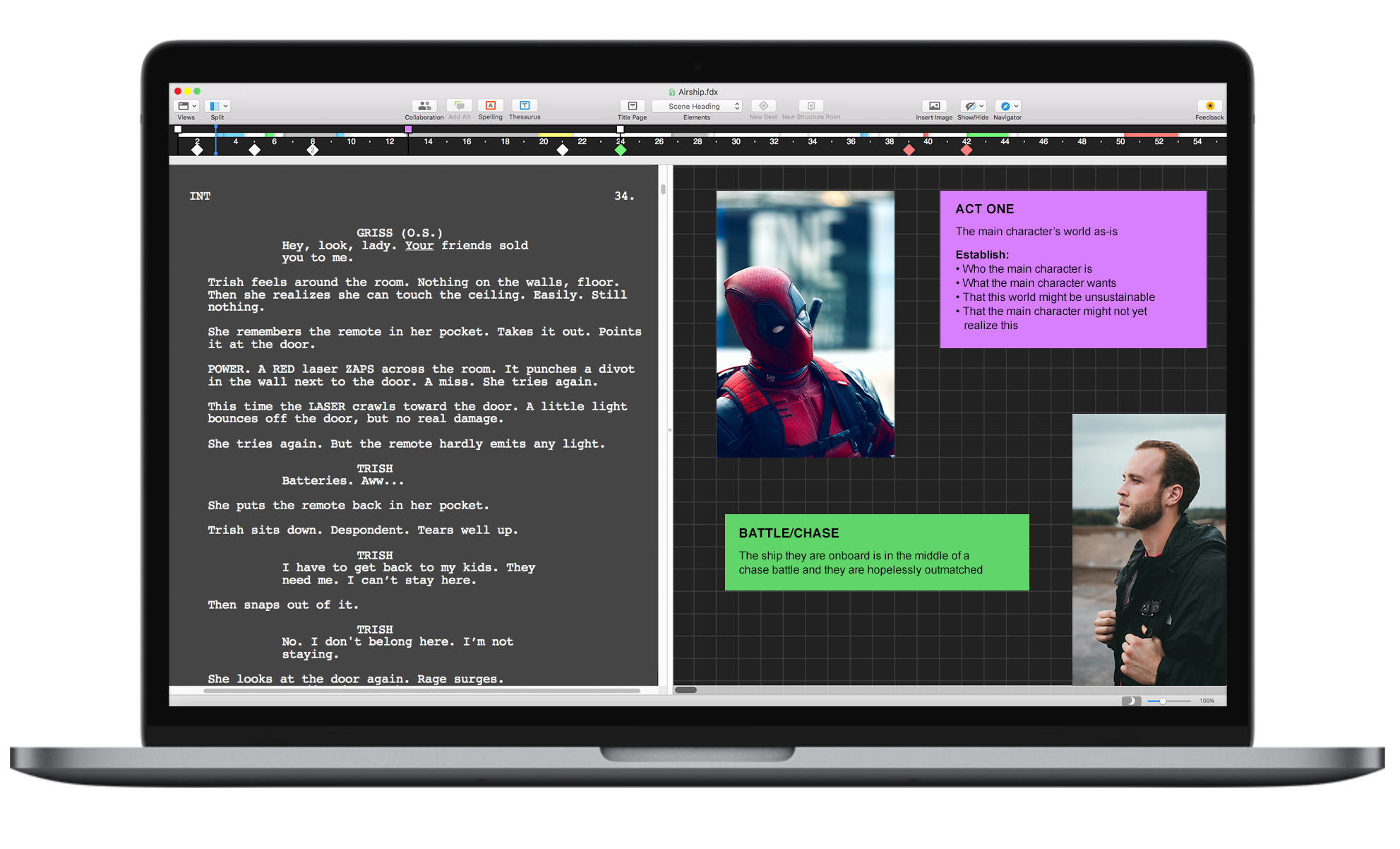

I found an AppImage file that includes all the international dictionaries (it's free and legal) and that also runs fine on this Chromebook - and it has a Screenplay "mode" and can export to Final Draft. So that combo is really a fifth screenplay writing "application." And you can also add Scrivener (the Linux beta from 2015 or 2016). I've also installed Jstar (which is what I'm using to write this) and Emacs with Fountain-Mode, plus 'Afterwriting CLI (for producing the PDFs). Fade In, Trelby, WriterSolo and KIT Scenarist. So what can you do with a $100 laptop? Quite a bit, actually - especially if you're willing to use Linux.īecause I wanted to satisfy my curiosity, I've loaded all four of the screenplay applications that run under Linux.

And, because of the light OS, the speed is fine with a Celeron N4000 CPU. I don't really use the Play Store - mostly this is a Linux laptop for me. The screen is not exceptional, but probably what you should expect on a $129 laptop and it works well for writing. It also has 32 GB of storage and a microSD slot for backup. I also picked one that had 4 GB of RAM (you can still get 2 GB RAM used versions, but they're getting rare).
#Final draft for chromebook android#
I picked one that was new enough to have both the Android Play Store and Crostini (the ability to run Linux). This Chromebook is an 11.6" Samsung Chromebook 4 and it costs (refurbished) $100 or new, $129. I use them as my laptops because they get about 12 hours of battery life - and my old, cheap laptops can't match that (can't come close). And so, in May or June of this year I bought a Chromebook. Last August he asked if Chromebooks could be used for writing screenplays and whether screenplay applications can be installed on them.


 0 kommentar(er)
0 kommentar(er)
